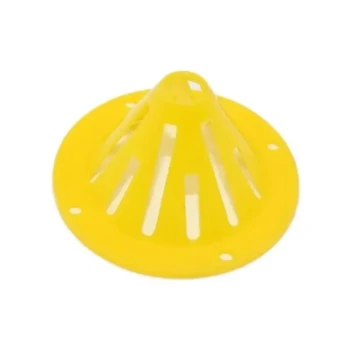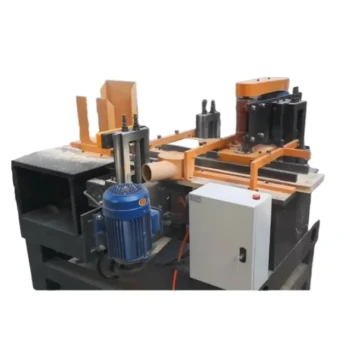The primary safety precautions in beekeeping are designed to protect you from three distinct hazards: bee stings, physical injuries from tools and equipment, and creating risks for the public. A comprehensive safety approach involves using the right personal protective equipment (PPE), handling tools with care and awareness, and positioning your hives responsibly.
True beekeeping safety extends beyond simply avoiding stings. It is a methodical practice of managing your environment, your tools, and yourself to prevent injury and ensure your hobby remains a positive experience for both you and your community.

Protecting Yourself: The Three Layers of Personal Safety
Your first priority is always personal protection. The key is to create a safe working environment around a colony of stinging insects through a combination of attire and tools.
The Bee Suit: Your First Line of Defense
A proper bee suit is non-negotiable, especially for new beekeepers. It should consist of a veil to protect your face and neck, a jacket or full suit to cover your body, and gloves for your hands.
Light-colored, smooth fabrics are less likely to alarm bees. Always ensure all zippers are fully closed and there are no gaps between your veil, suit, and gloves where a bee could enter.
The Smoker: A Tool for Calm, Not a Weapon
The smoker is a critical safety device used to calm the colony. The smoke masks the bees' alarm pheromones, reducing their defensive response and making them less likely to sting.
However, the smoker itself is a fire and burn hazard. Always use a safe, cool-burning fuel, light it on a non-flammable surface, and never leave it unattended on dry grass or wood. The metal canister becomes extremely hot during use.
The Hive Tool: Respect the Blade
A hive tool is essential for prying apart frames and boxes sealed with propolis. It is a sturdy piece of metal, often with a sharpened edge for scraping.
Always handle it with the same respect you would a chisel or knife. When prying or scraping, position your other hand away from the tool's potential path. A common injury occurs when a tool slips while scraping wax, cutting the beekeeper's hand.
Preventing Physical Strain and Injury
Beyond the bees themselves, the physical act of beekeeping presents its own set of risks that are often overlooked until an injury occurs.
Lifting With Your Legs, Not Your Back
A deep hive box full of honey can weigh 80-90 pounds (over 36 kg). Improperly lifting this weight is a direct path to serious back injury.
Always bend at your knees and lift with your legs. Consider using smaller, medium-sized boxes for honey supers, which are significantly lighter and easier to manage.
Maintaining Situational Awareness
An apiary can have uneven ground, hidden roots, and discarded equipment. Always be mindful of your footing to prevent trips and falls, especially when carrying a heavy box or a lit smoker.
Keep your work area tidy and free of obstacles to ensure you can move around the hives safely and retreat quickly if necessary.
Understanding the Trade-offs
Effective beekeeping involves balancing competing factors. Understanding these trade-offs is the mark of an experienced and thoughtful beekeeper.
Gloves: Dexterity vs. Sting-Proofing
Thick leather gloves offer maximum protection from stings but severely limit your dexterity, increasing the risk of crushing bees and making delicate tasks difficult. Thinner nitrile or goatskin gloves offer better feel but less protection.
Many experienced beekeepers eventually work with bare hands for maximum control, but this requires a deep understanding of bee behavior and a calm demeanor. For beginners, gloves are essential.
Site Location: Bee Needs vs. Human Proximity
Placing your hives is a critical safety decision. The ideal location has good sun and wind protection for the bees, but it must also consider neighbors and the public.
Position hives so the flight path does not cross public walkways or a neighbor's yard. Ensure a water source is available on your property so your bees don't congregate at a neighbor's swimming pool or birdbath.
Making the Right Choice for Your Practice
Your approach to safety will be guided by your primary goals and comfort level.
- If your primary focus is maximum personal protection: Invest in a high-quality, full-body ventilated suit and always wear thick leather gloves.
- If your primary focus is community safety and responsibility: Prioritize hive placement far from public areas and proactively manage swarm prevention.
- If your primary focus is long-term physical health: Adopt strict proper lifting techniques from day one and consider using 8-frame or medium equipment to reduce box weight.
By thinking about safety holistically, you transform beekeeping from a potentially hazardous activity into a predictable and deeply rewarding pursuit.
Summary Table:
| Safety Focus | Key Precaution | Why It Matters |
|---|---|---|
| Personal Protection | Full bee suit, veil, gloves | Prevents bee stings and reduces defensive response |
| Tool Safety | Proper smoker and hive tool use | Avoids burns, cuts, and colony agitation |
| Physical Safety | Lift with legs, maintain awareness | Prevents back injuries and trips/falls |
| Public Safety | Strategic hive placement | Minimizes risk to neighbors and community |
Ready to outfit your apiary with professional-grade safety gear? HONESTBEE supplies durable beekeeping supplies and equipment—including ventilated bee suits, reliable smokers, and ergonomic hive tools—to commercial apiaries and distributors through wholesale-focused operations. Ensure your team’s safety and efficiency with gear built for rigorous use. Contact us today to discuss your needs and request a wholesale catalog!
Visual Guide

Related Products
- Professional Galvanized Hive Strap with Secure Locking Buckle for Beekeeping
- Thick PVC Material Waterproof Anti-Slip Wear-Resistant Bee Work Shoes Boots for Garden Outdoor Utility
- Versatile Ratchet Hive Strap with S-Hooks for Secure Fastening
- Slatted Porter Style Bee Escape for Rapid Hive Clearing
- Endless Loop Ratchet Hive Strap
People Also Ask
- What maintenance is required for hive straps? A Guide to Cam Buckle vs. Ratchet Strap Care
- What is the advantage of using cam buckle straps? Secure Your Load Fast with Simple, Safe Tensioning
- How should a cam buckle strap be installed for optimal performance? Master the Leverage for Maximum Tension
- What are the types of Emlocks available? Choose the Right Strap for Hive Security
- Can straps with hook ends be used for beehives? A Guide to Secure Hive Management



















